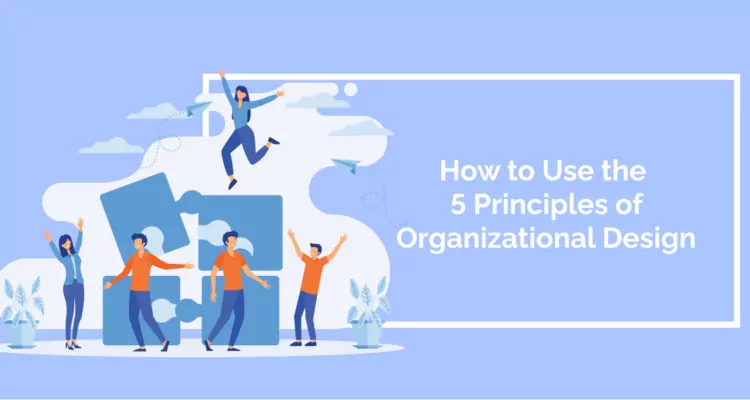
Organizational design is the process of structuring a company’s staff, hierarchy, and reporting relationships in a way that effectively supports its goals. It involves defining roles, responsibilities, and communication lines to foster efficiency and productivity while aligning with the company’s mission, vision, and strategic business priorities.
How does your organization look from a top-down perspective?
Is it an elegantly crafted machine with deliberate and efficient design, or a ramshackle collection of separate parts that have grown wildly over time like a thicket of unplanned interventions and poorly managed strategies?
Half of the respondents in one survey said their organization is unprepared for future shocks. By committing to organizational design goals, you will prepare for the future and protect yourself with digital resilience against challenges.
To help you use the five principles of organizational design, we will explore the following topics:
- What is organizational design?
- Organizational design vs. operating model
- Why is the goal of organizational design?
- What are the benefits of organizational design?
- What are the 4 organizational design issues and their solutions?
- What are the 10 principles of organizational design?
- What examples of organizational design are there in business?
What is organizational design?

Organization design is a procedure to mold how your organization functions, aiming to advance strategies and achieve objectives. This concept encompasses arranging frameworks and processes and facilitating individuals in embracing novel work approaches.
Generally, one or more of three primary catalysts instigate Organization Design:
- Shifts in strategy.
- Alterations in the surroundings.
- Existing design no longer fit for its role.
What is the goal of your organizational design?

Before undertaking an organizational design project, you must consider the goal.
Every effective organizational design endeavor must provide the following:
- Precise strategic purpose: What is our intended outcome?
- Directing tenets: Which principles shape our design choices?
- Competence charts: What abilities are necessary to achieve the strategic intent, and how do their significance vary?
- Framework for operational model: How will these abilities collaborate to execute tasks?
- Task delineation: Which teams, roles, and proficiencies are essential for delivery, and how will they be structured?
- Workforce strategy: What are our approaches for staffing the re-structure as part of your workforce transformation?
- Assessment metrics: How will we gauge the effectiveness of the design?
Being aware of the goal of organizational design will help your organization work toward the ideal outcome in a focused way to avoid waste and hit your ROI.
What are the benefits of organizational design?

Consider the benefits of organizational design to help you decide when and where to deploy your investment in this strategy.
Clarity within operations
Adopting an effective organizational structure is vital for all organizations, regardless of size.
It clarifies a company’s day-to-day operations and the process of making crucial decisions and other tasks by improving management structure in an existing organization according to strategic priorities to improve the technology company hierarchy.
An adept organizational structure can significantly impact efficiency, especially within larger enterprises.
Expansion prospects
An organization with an efficient structure can more readily capitalize on growth opportunities.
A superb organizational design encompasses a technological framework. It also proves advantageous when a manager is contemplating recruiting a new employee.
The organization’s structure stipulates precise measures when hiring new personnel.
Flexibility in the face of change
A pivotal characteristic of a potent design is its capacity to react to shifts in the marketplace and industry conditions using universal building blocks.
Numerous company leaders focus on existing operations, yet the finest design allows room for emerging trends as part of an organizational redesign.
Ideally, a pragmatic design is supple enough to accommodate any necessary adjustments.
What are the 4 organizational design issues and their solutions?
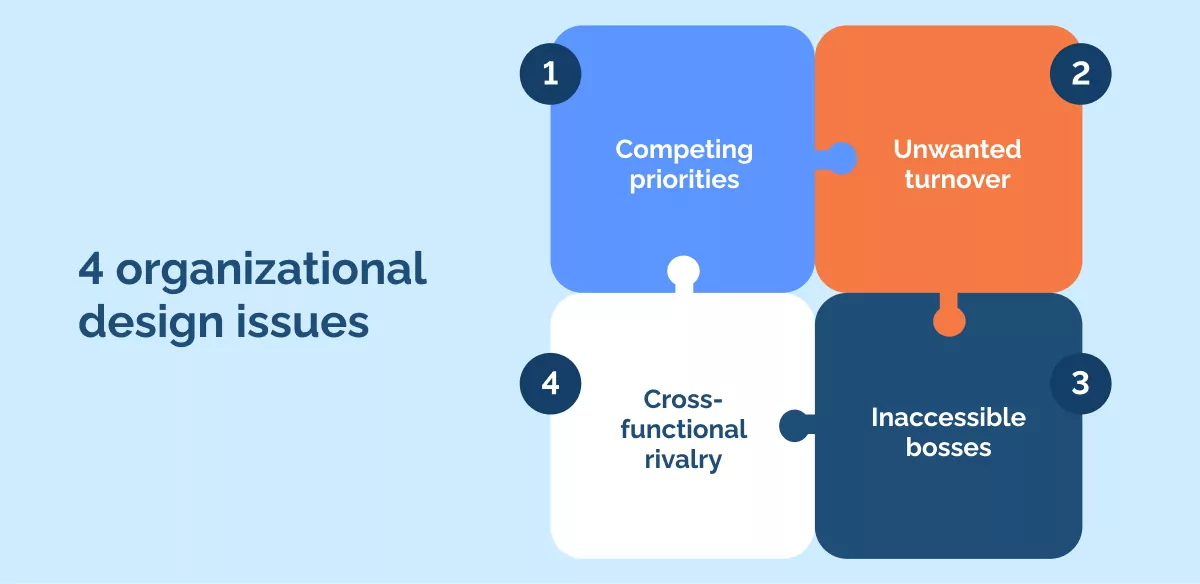
When you consider the four organizational design issues and their solutions, you will prepare in advance for any challenges you may face, ensuring reduced waste and a faster path to your ROI.
1. Competing priorities

The first issue you are likely to face is competing priorities between management, teams offering support functions and other stakeholders.
The issue
When different bosses lead departments and have varying goals and objectives, it can cause tension and distract from the overall mission.
Poor governance within complex organization designs can mean they don’t prioritize a more extensive plan within each division as part of an optimized business strategy.
The solution
You must set up decision-making systems to address common conflicts about priorities and resources. Achieve this by aligning the various departments and creating shared goals and choices that benefit the company as a whole:
● Create incentives that encourage teams to work together.
● Encourage open communication.
● Provide training that helps employees understand the importance of collaboration.
2. Unwanted turnover

The second issue you may face is unwanted staff turnover.
The problem
Employers are losing their most talented employees through bad role design. LinkedIn suggests an average turnover of staff across all industries is 10.9%. Look into what is typical for your enterprise.

The reason for team members leaving could be due to several factors.
The solution
Build a strong sense of company culture and values to retain the talent you already have and attract new talent:
● Provide extensive opportunities for personal and professional growth. A DAP (digital adoption platform) can support growth and professional development tailored to staff needs using in-app guidance.
● Create an open and supportive work environment.
● Offer competitive compensation and attractive benefits.
3. Inaccessible bosses
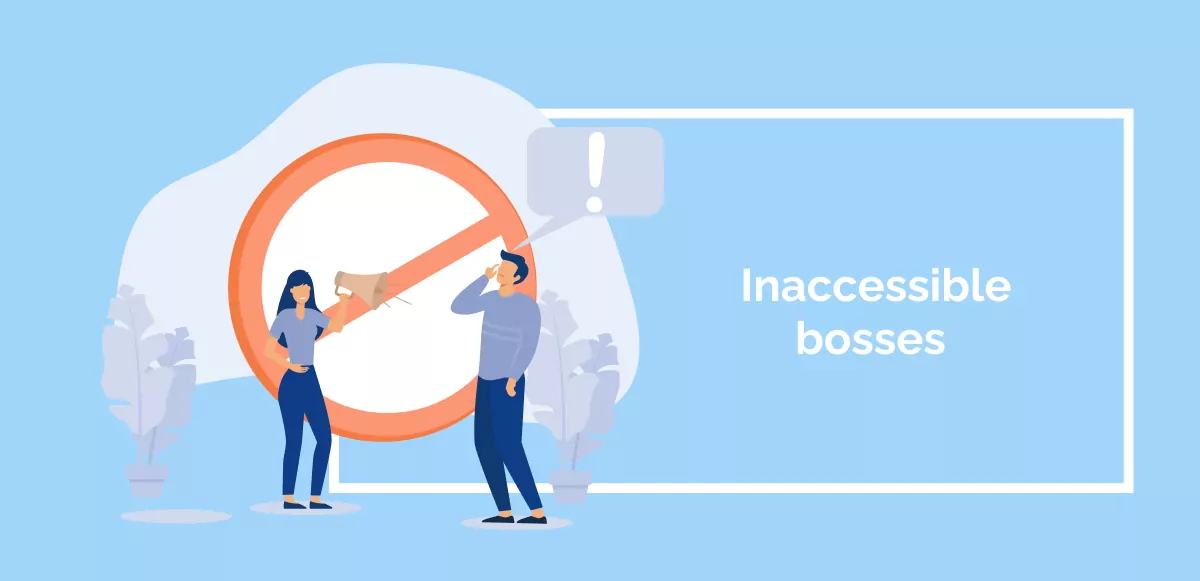
The third issue that organizations often encounter is inaccessible bosses.
The issue
While many leaders will say they are ‘hands-on’ and promote a collaborative culture, the reality is that they stay behind closed doors at their desks the majority of the time.
When bosses are unavailable and unapproachable, it can create detachment from staff and breed mistrust.
The solution
It is good business to bring bosses and workforces together. Create an open-door policy where employees can approach their superiors with concerns, ideas, and feedback:
● Schedule meetings for the team.
● Encourage direct reports.
● Be visible, available, and on the ‘shop floor.’
Embracing feedback in both directions and showing appreciation for everyone’s contribution can help to open up the office and promote workplace camaraderie.
4. Cross-functional rivalry

Consider the final issue, cross-functional rivalry, to ensure a streamlined organizational design project.
The issue
Rather than cooperating, too many functions end up competing against each other. Employees from different departments often work against each other rather than collaborating on projects.
These misaligned incentives or metrics can trigger departmental rivalry, and team-building events alone aren’t enough to reach the cause of the conflict.
The solution
It is essential to create clear goals and expectations and set up channels for open discussion:
● Develop shared accountability by providing team members with incentives to work together.
● Encourage inter-departmental relationships by creating an open forum to air concerns and biases and resolve misconceptions.
All these issues and solutions will help you reduce the loss of funding and time as you navigate the successes and challenges of your organizational design efforts.
What are the 5 principles of organizational design?
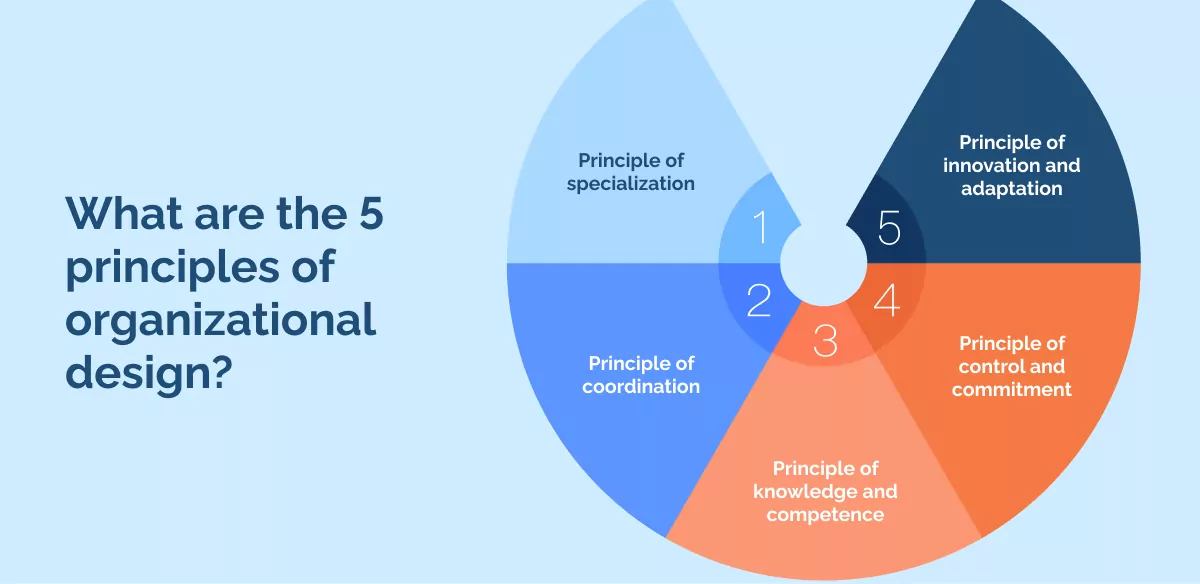
Look at the five principles of organizational design and use them as a guide toward success in all your corporate design efforts.
1. Principle of specialization
The principle of specialization asserts that boundaries should be present to foster the development of specialized skills, making it high strategic importance.
The criterion for evaluation is whether any distinct specialist cultures, separate from the rest of the organization, are adequately shielded from the dominant culture’s influence.
2. Principle of coordination
This principle maintains that activities should be harmonized within a singular unit. This unit could be a business unit, a business function, a (horizontally coordinating) overlay unit, a sub-business, a core resource unit, a shared service unit, a project unit, or a parent unit.
The test here is to identify instances where inter-departmental coordination proves challenging.
These “difficult links” are connections where typical networking fails to yield coordination benefits. In such cases, either coordination should be facilitated, or responsibility should be centralized within a single unit.
There exists a variety of units that can be employed in organizational design, as we will elaborate below.
3. Principle of knowledge and competence
This principle stipulates that responsibilities should be assigned to the individuals or teams most capable of executing them.
Tasks are retained at higher levels based on their knowledge and competitive advantage. If this is not the case, they should be delegated to lower positions within the organization.
This implies that the CEO need not be involved in every decision, especially those involving specialists with far more subject-matter expertise. The CEO oversees the big picture and navigates complex decisions that impact the organization and its strategy.
4. Principle of control and commitment
This principle focuses on achieving effective control while simultaneously nurturing engagement and commitment. This equilibrium is always delicate.
The test is to establish a control mechanism aligned with the unit’s responsibilities, cost-effective implementation, and motivation for its members, often using a matrix structure for different roles responsible for different responsibilities across business units.
The CEO should not personally approve a $30 keyboard purchase decision—such micromanagement could demotivate staff.
Control over minor expenditures should be delegated lower in the organization to enhance adaptability.
5. Principle of innovation and adaptation
The principle of innovation and adpaptation shows that organizational structures must exhibit sufficient flexibility to accommodate a perpetually evolving world within the organizational design process.
The benchmark here is whether the organizational design facilitates the development of novel strategies and the capacity to adapt to future changes and what areas of the current organization requires innovation and adaptation in its design.
Distinct factors influence these five principles in the organization’s internal and external environment. Earlier, we discussed strategy.
These five principles equip an organizational designer to (re)configure and align the organization with the key factors impacting an organization’s design.
Make a DAP the core of your organizational design efforts
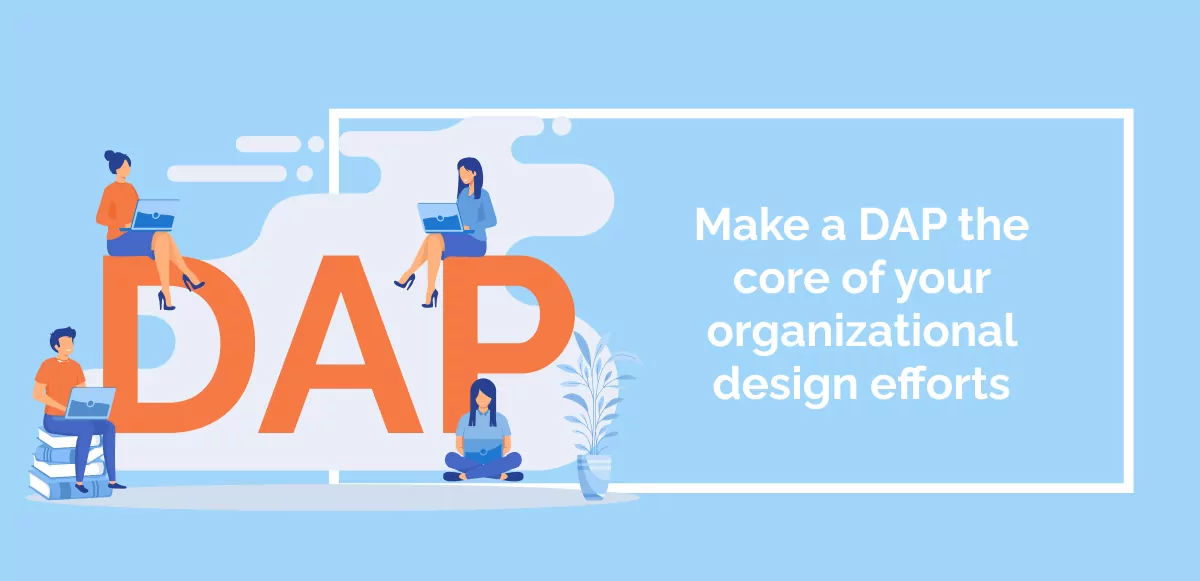
A powerful guiding principle emerges in organizational design: Make a Digital Adoption Platform (DAP) the heart of your endeavors.
As outlined in the preceding sections, a DAP integrates the core principles of specialization, coordination, knowledge and competence allocation, control and commitment, and innovation and adaptation.
By embracing a DAP-centric approach, organizations can navigate complexities, enhance efficiency, and streamlined process for managing resistance to change during an organiztional redesign.
This strategic pivot optimizes operations and propels organizations towards a future where agility, engagement, and proficiency intersect harmoniously, catalyzing success in the ever-evolving business landscape as part of an organization’s strategy.
Tristan Ovington
Tristan Ovington is a professional senior writer and journalist, specializing in providing expert insights on various topics such as digital adoption, digital transformation, change management, and Cloud apps. He delivers his knowledge through accessible online content that is data-driven and presented in a friendly tone, making it easy for readers to understand and implement.



